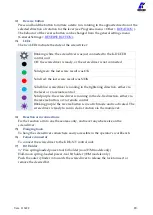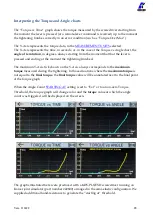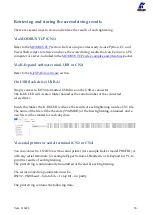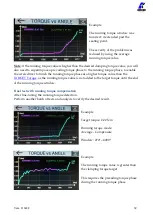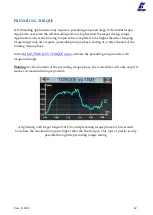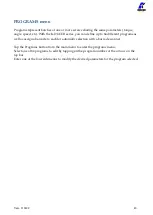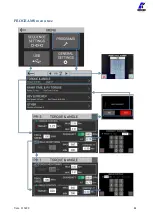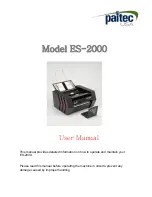
Vers. 111422
31
Determining the appropriate program settings
The K-DUCER is a highly accurate system, but it is critically important to select the
appropriate settings to ensure that the desired torque is correctly applied, and that the
screwdriver motor works effectively and efficiently.
Determining the appropriate program settings for your application requires careful
consideration and is ideally done by a trained engineer with knowledge of the torque
specifications and of the mechanical characteristics of the assembly joint.
Please take advantage of the free support provided by your Kolver representative
throughout this process.
What follows are some general guidelines, but they are not meant to substitute a careful
examination of the application. Each application is unique and may require significant
deviations from these guidelines.
These guidelines are always superseded by the specifications of the assembly joint and by
all safety requirements of the operator and work environment.
Kolver is not responsible for damages or injuries resulting from following these guidelines.
Hard/inelastic joints
These joints are best finished at low speed, to improve precision and avoid a high velocity
impact at the end of the tightening.
such as 100 RPM*, and if desired, use a two-speed approach
by activating the
setting using either an angle threshold or a torque
threshold equal to 20-50% of the target torque.
The lower the torque target is relative to the range of the screwdriver, the higher the effect
of motor inertia will be, requiring a lower final speed to avoid overshooting.
Soft/elastic joints
These joints are best executed at high speed, to avoid exposing the motor to a prolonged
time-under-tension and
for these joints, and if a two speed approach is required,
activate the
setting using either an angle threshold or a torque threshold of at
least 80% of the target torque to ensure most of the torque is applied at higher speed.
Very elastic joints, or semi-elastic joints with a high target torque relative to the range of the
screwdriver, may benefit from a higher
and from avoiding the use of the
*for KDS-PL15 and smaller high-speed drivers. Use a lower speed for higher torque tools.
Содержание 033001
Страница 1: ...KDU NT and KDS NT Torque range 5 70 cNm 7 100 ozfin OPERATOR MANUAL Patent pending...
Страница 13: ...Vers 111422 13 Threaded M3 fixturing holes side holes on CA models only...
Страница 24: ...Vers 111422 24 Main Screen Sequence Mode navigation tree see Torque and Angle graphing for more information...
Страница 44: ...Vers 111422 44 PROGRAMS menu tree...
Страница 45: ...Vers 111422 45...
Страница 46: ...Vers 111422 46...
Страница 47: ...Vers 111422 47...
Страница 58: ...Vers 111422 58 SEQUENCE SETTINGS menu tree...
Страница 68: ...Vers 111422 68 USB menu tree...
Страница 72: ...Vers 111422 72 Pinout CN5...
Страница 83: ...Vers 111422 83 EXPLODED VIEW KDS NT70 KDS NT70 HM...
Страница 84: ...Vers 111422 84...
Страница 85: ...Vers 111422 85...
Страница 86: ...Vers 111422 86 SPARE PARTS KDS NT70 KDS NT70 HM Lever Kit HM Half Moon model...
Страница 87: ...Vers 111422 87 EXPLODED VIEW KDS NT70CA KDS NT70CA HM...
Страница 88: ...Vers 111422 88 SPARE PARTS KDS NT70 KDS NT70 HM...




